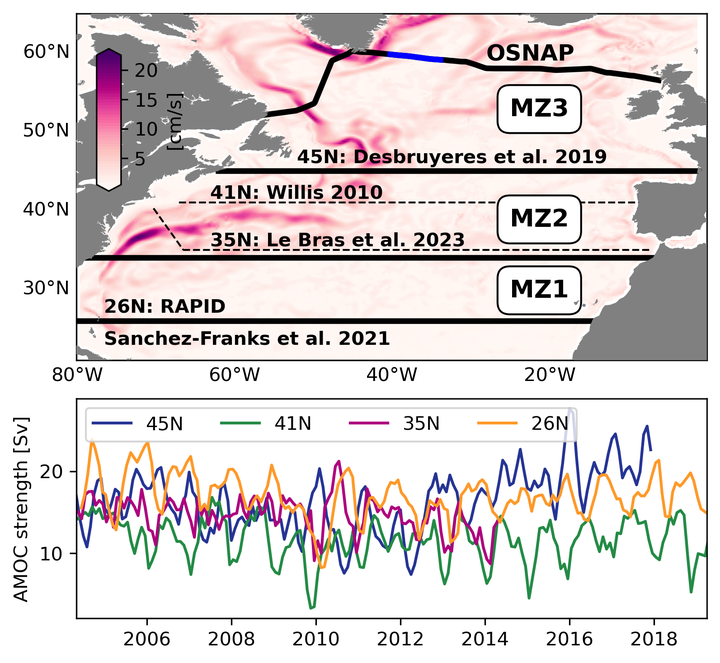MEZCAL

The AMOC is increasingly linked to climate impacts and coupled climate models suggest that it will weaken. However, programs that directly monitor the AMOC have relatively short durations (two decades at most), and so it is unclear whether the AMOC has declined during the observational record. Direct observations are also too sparse to establish the spatial structure of the AMOC across the Atlantic. Therefore, it has become a scientific priority to determine whether AMOC strength and structure can be inferred through alternative “indirect” means. To address this challenge, MEZCAL will bring together techniques combining satellite and autonomous ocean observations, machine learning approaches that build empirical relationships between the AMOC and observations, and adjoint-methods that connect atmospheric forcing with circulation in ocean models to deliver a new AMOC framework from indirect observations, which will (a) extend the spatial coverage of the AMOC across the North Atlantic, (b) reconstruct the AMOC backwards in time from historical datasets and models, and (c) make recommendations to ensure a sustainable future monitoring system. By assembling the observational oceanography, artificial intelligence, and numerical modeling communities we will establish best practices for determining past, present, and future AMOC changes from indirect observations and create a step change in our understanding of the spatiotemporal structure of the AMOC, thus shaping the future of AMOC observing.
This project is a UK-US collaboration led by Alejandra Sanchez-Franks (NOC Southampton) and many co-PIs and collaborators. UK funding is provided by the National Environmental Research Council (NERC) and US funding by the National Science Foundation (NSF).